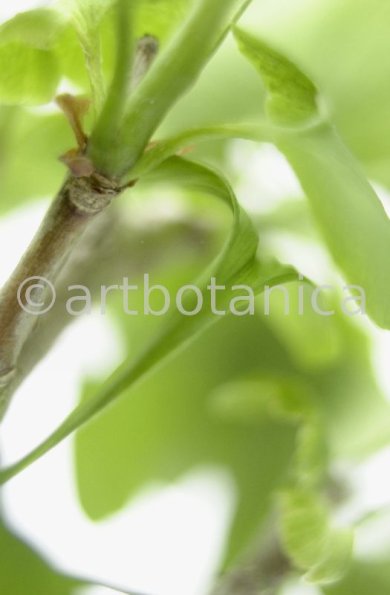
Der 30 m bis 40 m hoch wachsende Ginkgobaum ist ein sommergrüner Laubbaum. Er gehört entwicklungsgeschichtlich zu den ältesten Pflanzenarten der Erde und stellt das Bindeglied zwischen Farnen und Nadelhölzern dar. Die Blätter färben sich im Herbst goldgelb. Der ursprünglich in China, Korea und Japan beheimatete Baum wird zunehmend auch in Europa angepflanzt, da er gegen schädliche Umwelteinflüsse sehr resistent zu sein scheint. Der Ginkgo ist zweihäusig, d. h. es gibt männliche und weibliche Pflanzen. Der Name biloba = zweilappig weist auf die typische Blätterform hin. Ginkgos are very large trees, normally reaching a height of 20–35 m with some specimens in China being over 50 m. The tree has an angular crown and long, somewhat erratic branches, and is usually deep rooted and resistant to wind and snow damage. Young trees are often tall and slender, and sparsely branched; the crown becomes broader as the tree ages. During autumn, the leaves turn a bright yellow, then fall, sometimes within a short space of time (1–15 days). The Ginkgo is a living fossil, with fossils recognisably related to modern Ginkgo from the Permian, dating back 270 million years.
